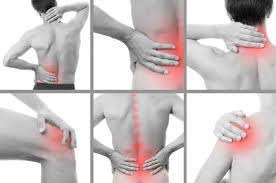Introduction
Stress is an unavoidable part of life, but its effects on the body can be more severe than many realize. One of the most common physical manifestations of stress is muscle spasms—sudden, involuntary muscle contractions that can cause discomfort or even pain. These spasms can affect various muscle groups, including the neck, shoulders, back, and legs, disrupting daily activities and overall well-being. Understanding how stress contributes to muscle spasms and learning effective calming techniques can help manage and prevent these episodes.
Understanding Stress-Induced Muscle Spasms
When we experience stress, our bodies enter a heightened state of alertness, often referred to as the “fight or flight” response. This response triggers the release of stress hormones such as cortisol and adrenaline, which prepare the body to react to potential threats. However, chronic stress keeps the body in this state for extended periods, leading to muscle tension, fatigue, and spasms.
How Stress Contributes to Muscle Spasms
- Increased Muscle Tension – Stress causes muscles to tighten as a protective response, which, if prolonged, can lead to painful spasms.
- Reduced Blood Flow – Tension restricts blood circulation to muscles, depriving them of oxygen and nutrients, making them more prone to cramping.
- Nerve Hyperactivity – Stress overstimulates the nervous system, leading to erratic nerve impulses that can trigger involuntary muscle contractions.
- Poor Posture and Habits – Under stress, people often adopt poor posture, such as hunching shoulders or clenching their jaw, exacerbating muscle strain and discomfort.
- Electrolyte Imbalance – Chronic stress affects the body’s ability to absorb and regulate essential minerals like magnesium and potassium, increasing muscle cramp likelihood.
- Lack of Physical Activity – Many individuals experiencing stress tend to become sedentary, leading to muscle stiffness and increased risk of spasms.
Common Areas Affected by Stress-Induced Spasms
- Neck and Shoulders – Prolonged stress often results in tension in these areas, leading to stiffness and pain.
- Lower Back – Stress can cause tightness in the lumbar region, leading to discomfort and spasms.
- Legs and Calves – Anxiety-related hyperactivity can contribute to restless leg syndrome and cramps.
- Jaw (TMJ Disorder) – Clenching the jaw due to stress can lead to tightness and spasms in the facial muscles.
Calming Techniques to Manage and Prevent Muscle Spasms
Fortunately, several effective techniques can help reduce stress-induced muscle spasms. Incorporating these methods into daily life can provide relief and prevent recurrence.
1. Deep Breathing Exercises
Breathing techniques can help lower stress levels and relax muscles:
- Diaphragmatic Breathing – Inhale deeply through the nose, letting your abdomen expand, and exhale slowly through the mouth.
- 4-7-8 Technique – Inhale for 4 seconds, hold for 7, and exhale for 8 seconds to calm the nervous system.
2. Progressive Muscle Relaxation (PMR)
This method involves tensing and then relaxing different muscle groups to alleviate tension. Steps:
- Start from your toes and work your way up to your head.
- Tense each muscle group for 5-10 seconds before slowly releasing.
3. Stretching and Yoga
Regular stretching helps release built-up tension and prevents spasms:
- Neck Stretches – Gently tilt your head from side to side and forward to relieve tension.
- Cat-Cow Pose – A simple yoga stretch that eases back tightness.
- Hamstring Stretch – Helps relax the lower back and leg muscles.
4. Massage Therapy
Massage helps improve circulation, reduce muscle stiffness, and promote relaxation. Options include:
- Self-Massage – Using a foam roller or massage ball to target tense areas.
- Professional Massage – A deep tissue or Swedish massage can help release chronic tension.
- Essential Oils – Using calming oils like lavender, peppermint, or eucalyptus can enhance the massage’s effects.
5. Mindfulness and Meditation
Practicing mindfulness reduces stress and enhances overall relaxation:
- Guided Meditation – Listening to guided sessions can help focus the mind and ease tension.
- Body Scan Meditation – Bringing awareness to different body parts to release stored stress.
6. Hydration and Nutrition
A well-balanced diet ensures muscles receive the necessary nutrients to function properly:
- Increase Magnesium Intake – Foods like spinach, nuts, and dark chocolate help prevent cramps.
- Maintain Potassium Levels – Bananas, oranges, and avocados support muscle relaxation.
- Stay Hydrated – Dehydration can exacerbate muscle spasms, so drink plenty of water.
7. Regular Exercise
Physical activity is an excellent way to relieve stress and reduce muscle tension:
- Low-Impact Activities – Walking, swimming, or cycling improve circulation and keep muscles flexible.
- Strength Training – Strengthening muscles can prevent them from becoming easily fatigued.
- Tai Chi and Qigong – These gentle movement practices promote relaxation and balance.
8. Heat and Cold Therapy
Applying heat or cold can help soothe muscle spasms:
- Warm Compress or Heating Pad – Increases blood flow and relaxes tight muscles.
- Ice Packs – Reduces inflammation and numbs pain in acute spasms.
9. Adequate Sleep
Poor sleep exacerbates stress and muscle tightness. To improve sleep quality:
- Establish a consistent sleep schedule.
- Create a relaxing bedtime routine (dim lights, avoid screens before bed).
- Use a supportive mattress and pillow to maintain good posture.
10. Seeking Professional Help
If muscle spasms persist despite lifestyle changes, consider consulting a healthcare provider:
- Physical Therapy – A specialist can recommend exercises to improve muscle health.
- Chiropractic Care – Adjustments can help realign the body and relieve tension.
- Medication – In some cases, muscle relaxants or stress management medications may be necessary. Aspadol 100 mg, a centrally acting analgesic, can help relieve moderate to severe muscle pain caused by spasms. It works by altering the way the nervous system perceives pain, providing relief for those experiencing persistent discomfort due to stress-induced muscle spasms.
Conclusion
Stress-induced muscle spasms can significantly impact daily life, but understanding their causes and incorporating effective calming techniques can help manage them. By practicing relaxation exercises, maintaining a healthy lifestyle, and seeking professional support when needed, individuals can reduce muscle tension and improve overall well-being. Taking proactive steps to manage stress not only alleviates muscle spasms but also enhances mental and physical health, leading to a more balanced and pain-free life.
Also Visit: https://buysafemg.com/
Also Read
- ► Honista APK Download Latest Official Version For Android 2025
- ► The Best Vegan Multivitamins for Women: Why LIVS Gummies Are a Top Pick
- ► Kocaeli Web Tasarım: Dijital Dünyada Öne Çıkan Çözümler
- ► Fast and Reliable Garage Floor Coatings in Phoenix
- ► How Office Interior Designers Integrate Technology Into Workspaces
- ► What Are the Hazards in Electrical Installation Work?
- ► How Glutax 50000000GS Supports Healthy, Youthful Skin Beyond Whitening
- ► Cloud Computing in Healthcare: How Providers Are Enabling Innovation
- ► Everything You Need to Know About Choosing the Best Vape Juice for Your Vaping Needs
- ► Kashmir Great Lakes Trek: A Complete Guide for First-Time Trekkers
- ► Live Cricket Gaming – Play & Earn Real Money Daily
- ► Corteiz Cargos The Perfect Fusion of Style and Functionality
- ► Emergency Fixes for a Blocked Drain Before Calling a Plumber
- ► University of Greenwich Courses: Guide by Trivandrum Experts
- ► Master Dissertation Help





